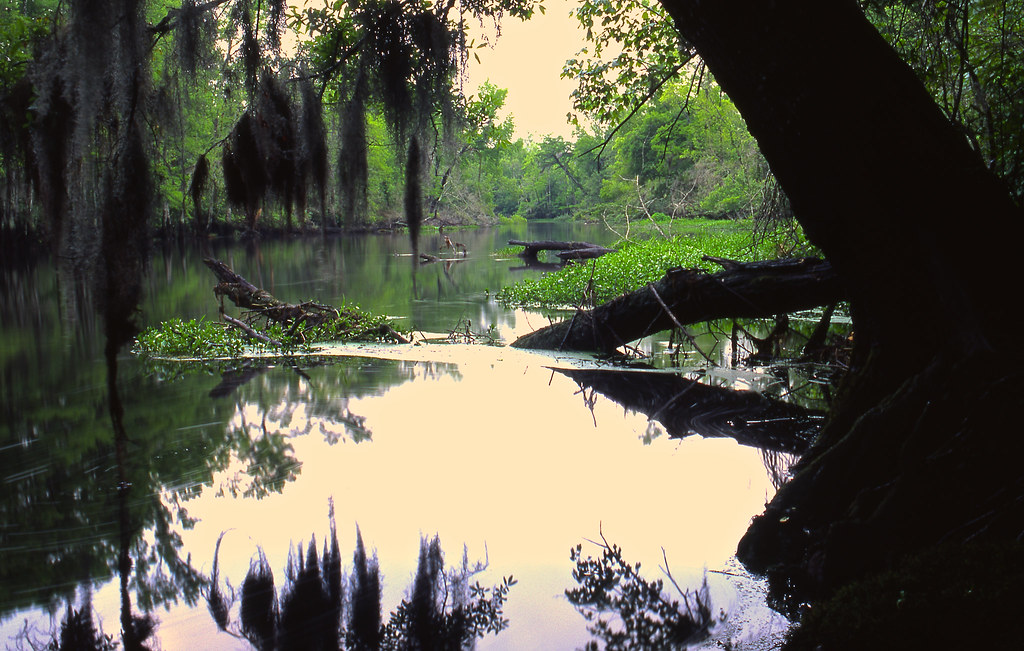Class I Lumber River, NC
Wild & Scenic Lumber River (State Route 1412/1203 to North/South Carolina Border)
The Lumber River is located in south-central North Carolina in the flat Coastal Plain. The river's headwaters are known as Drowning Creek; the waterway known as the Lumber River extends from the Scotland County-Hoke County border 115 miles downstream to the North Carolina-South Carolina border. Soon after crossing into South Carolina, the Lumber River flows into the Little Pee Dee River, which eventually flows into the Great Pee Dee River and on into Winyah Bay and the Atlantic Ocean.
The Lumber River has regional recreational value for canoeing and sightseeing opportunities. The river offers visitors an opportunity to experience multi-day canoe trips on an unusually long and meandering blackwater river in a natural and uncrowded setting. The Lumber River is one of few rivers in the region that travels through two distinct physiographic regions—starting in the Sandhills Region and flowing through the Coastal Plain—providing a diverse canoeing setting. Currents and obstructions by fallen trees provide additional variety and offer navigability challenges.
The Lumber River's significance as a canoe trail was formally recognized in 1978 when the upper river was designated North Carolina's first recreational water trail. In 1981, this segment of the river was designated a National Water Trail, the first such trail in the southeastern United States. In 1984, the lower river was included in the list of National Canoe Trails.
For More Information Visit: Lumber River - rivers.gov Lumber River Trail
Section Details
| Trip Length | Multiday, 81.0 Miles |
| Fishing | Yes |
| Camping | Yes |
| Manager | State, Lumber River State Park |
| Wild & Scenic | Yes |
| Water Trail | No |
| Partner Information |
https://www.rivers.gov/river/lumber
http://www.lumberriverconservancy.org/lumber_river.html |

Photo Credit: Tim Palmer
